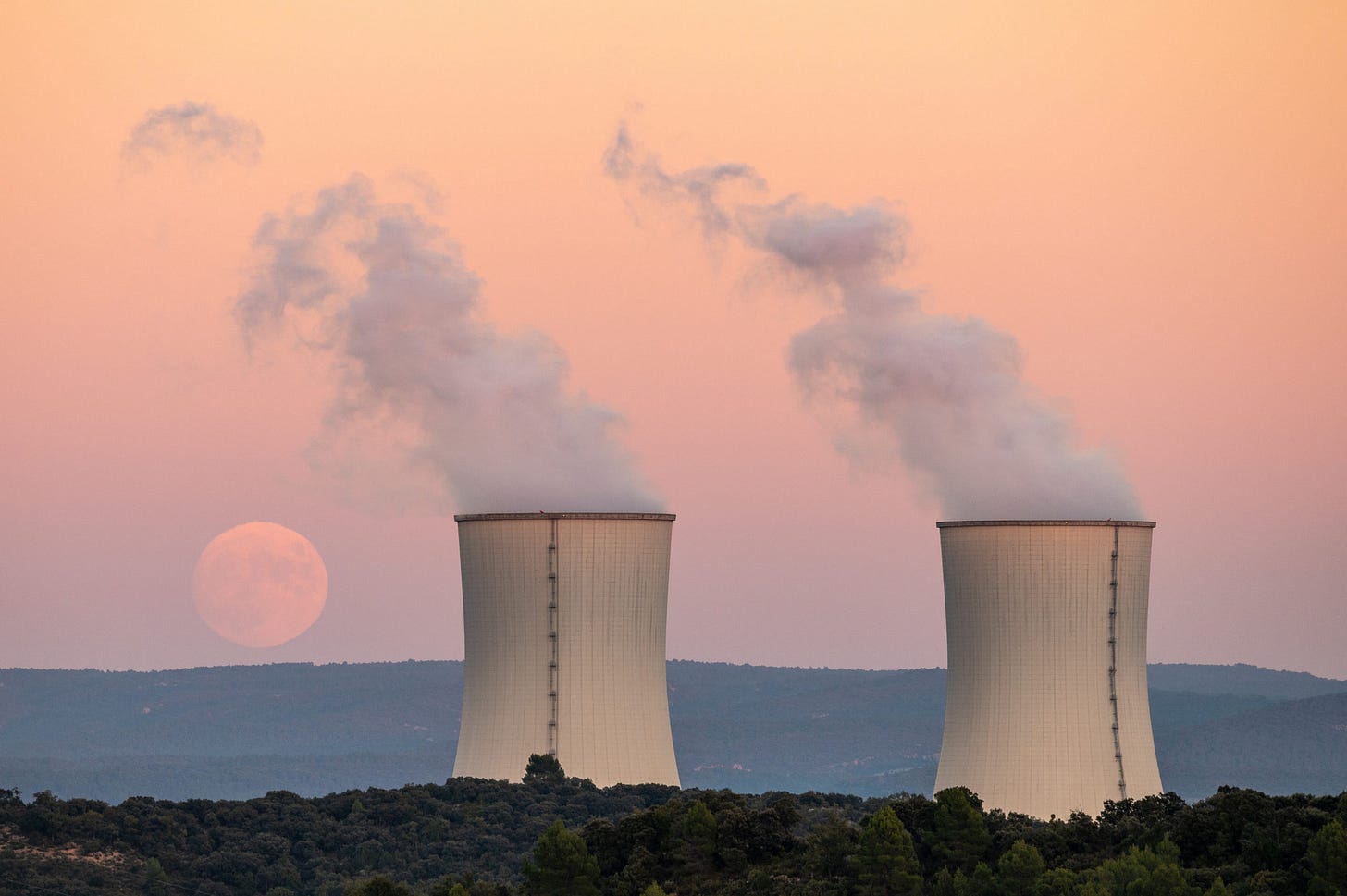Smaller, Safer Nuclear Power
And the role they could play in the energy economy.
[On the August 12, 2022, episode of The Bulwark’s “Beg to Differ” podcast, Mona Charen asked guest Ted Nordhaus to discuss the arguments one hears against civilian nuclear power.]
Mona Charen: People are worried, first of all, about the potential for accidents. So can you address that problem?
Ted Nordhaus: Yeah, by the numbers, statistically, over now, over sixty years of substantial commercial nuclear energy operations globally, there have been three significant accidents: the accident at Three Mile Island, the accident at Chernobyl, the accident at Fukushima.
The two of those accidents in . . . democratic, free, open societies, have killed nobody. So, there has not been a sort of single death attributable to an accident at a commercial nuclear power plant in the Western world ever in over sixty years.
And by that measure, it is the safest energy technology humans have ever invented, safer even than wind and solar, which are very, very safe, and vastly safer than burning fossil fuels, which even before one starts to talk about what may or may not happen due to climate change, just millions and millions and millions of deaths every year just from air pollution. So you know, nuclear is extraordinarily safe.
And we’re now talking about commercializing a new generation of reactors in the next decade or so, that are even radically more safe than the radically safe nuclear technologies we have today.
Charen: Yeah, can you talk a little bit about so-called SMRs, small modular reactors?
Nordhaus: Your . . . grandfather’s nuclear plant is a 1-gigawatt light water reactor. Those are the kind of big things that, you know, you drive by ’em, you kind of can see him for miles and miles away. That’s where Homer Simpson goes to work. A 1-gigawatt plant is enough electricity to power a million homes. So, every one of those like big plants, a million people get their electricity twenty-four hours a day, seven days a week, fifty-two weeks a year, and they will run for, you know, eighty years.
Small Modular Reactors are radically smaller. So, the first one that we’re likely to commercialize is the NuScale reactor. This is also what’s called a light water reactor. So it’s very similar to those big reactor, but instead of being a gigawatt, which is a thousand megawatts, the NuScale reactor, each one of these reactors will be 77 megawatts, so less than a tenth the size of a conventional reactor.
There’s another reactor that’s not a light water reactor, it’s a different kind of cooling technology called the Oklo reactor that is currently seeking to be licensed at the NRC. That will be 1.5 megawatts. And it’s being targeted initially for off-grid communities—places in Alaska, or where it’s very expensive to get electricity. So, that’s about six hundred times smaller than those big conventional nuclear plants.
And the idea with these small modular reactors is that you can crank them out in factories, and you kind of avoid a lot of the things that have made nuclear costly and difficult to build in recent decades, because basically, a large nuclear power plant is just a massive public works project. And we’re not that good at it, you know? We can talk about why, but we’re not so great these days at massive public works projects.
So as a colleague of mine sometimes says, for nuclear to have a real kind of future, in the West, particularly, we need to shift from building airports to building airplanes. And that’s what you’re really doing when you’re going from this conventional, very large public works project that we have historically powered the grid with to these much smaller modular reactors.
Charen: And it also makes the regulatory burden much lighter, right, because once you’ve approved one small modular reactor, you can just stamp them out—right?
Nordhaus: Well, that is true in theory. . . . We are going to find out in the next couple of years whether the Nuclear Regulatory Commission, despite a very significant mandate from Congress to modernize its licensing regimes to license advanced small reactors, is actually capable of reforming itself.


